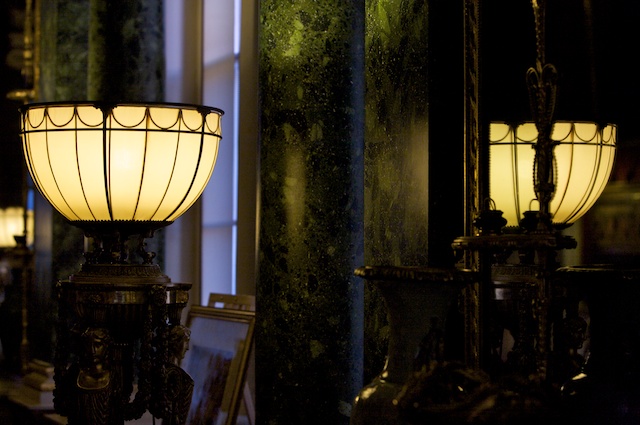
Science and technology are not topics typically associated with historic houses or their inhabitants. They are often well known for their fine furnishings and great works of art, but it is perhaps quite unusual, and unexpected, to think of them as thriving hubs of technological advancement.
New research undertaken at the University of Leeds has focused on the unique relationship between country houses and the history of innovation and experimentation. With inhabitants who could often afford to invest financially and socially in new and somewhat mysterious technologies, country houses became some of the earliest venues for the installation of electrical appliances. They also exposed its householders (sometimes reluctantly) to the enormous social change and development that these innovations brought with them.
Harewood House Trust, in collaboration with Dr Michael Kay from the University of Leeds, has recently been awarded a grant of £5000 from The Culture Capital Exchange to research and explore the little known story of electrification at Harewood House. Initial research has established a basic timeline of electrification and has already revealed some fascinating stories: from the intriguing routine of Harewood’s Lamp Man to the curious practice of employing electricians to ‘stand by’ during dinner parties.
The first phase of the House’s electrification took place in 1901, commissioned by the 5th Earl of Harewood. Archival evidence shows that there was seemingly fierce competition between early electrical contractors to obtain the job, and the merits and weaknesses of utilising hydropower was carefully considered. The installation of electricity was continued in the early 1930s when the 6th Earl of Harewood and his wife, Princess Mary, moved into Harewood House. The Princess Royal made a specific request for electric lighting in her new dressing room along with other modern conveniences, such as the installation of a lift and the purchase of a Hoover vacuum cleaner was made.
Dr Kay’s interesting research will inform a number of workshop events at Harewood House and the University of Leeds, featuring a short drama performance exploring the story of electrification from the perspective of staff and servants.
Join us on the 21 August at Harewood for a day of illuminating activities that will explore the theme of electricity within the House. You will be able to try your hand at making cup and string telephones in our crafts activity, and also have a go at a new technology trail. Our family friendly drama performance, taking place in the Steward’s Room, will be followed by an opportunity talk to the characters and ask them questions. Participants will then be able to handle some early electrical equipment with Dr Kay and Harewood staff. There will also be a special display of Harewood’s historic light fittings and related archival documentation, both Below Stairs and on the State Floor, as well as a 10 minute Discovery Talk focusing on Dr Kay’s research.
https://cpff.ca/wp-content/languages/new/zovirax.html
https://cpff.ca/wp-content/languages/new/nexium.html
https://cpff.ca/wp-content/languages/new/plavix.html
Similar workshops will also be taking place at the University of Leeds on 11 August for Year 5 and 6 pupils from the IntoUniversity charity‘s summer educational programme, and 11 September as part of the Heritage Open Days programme.

